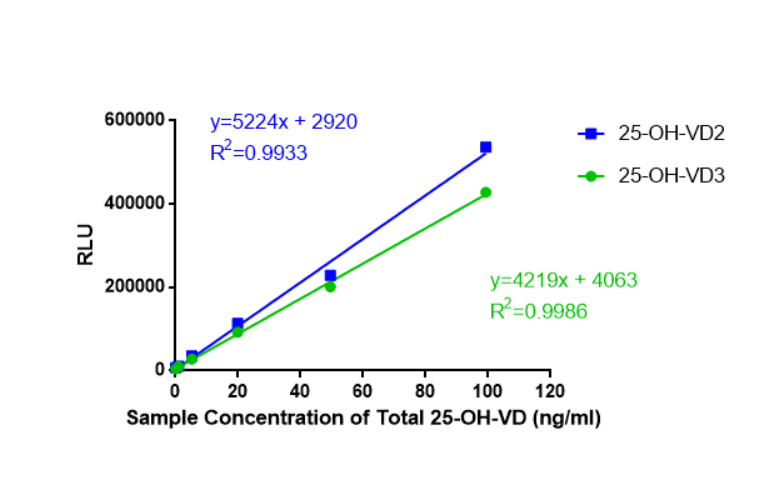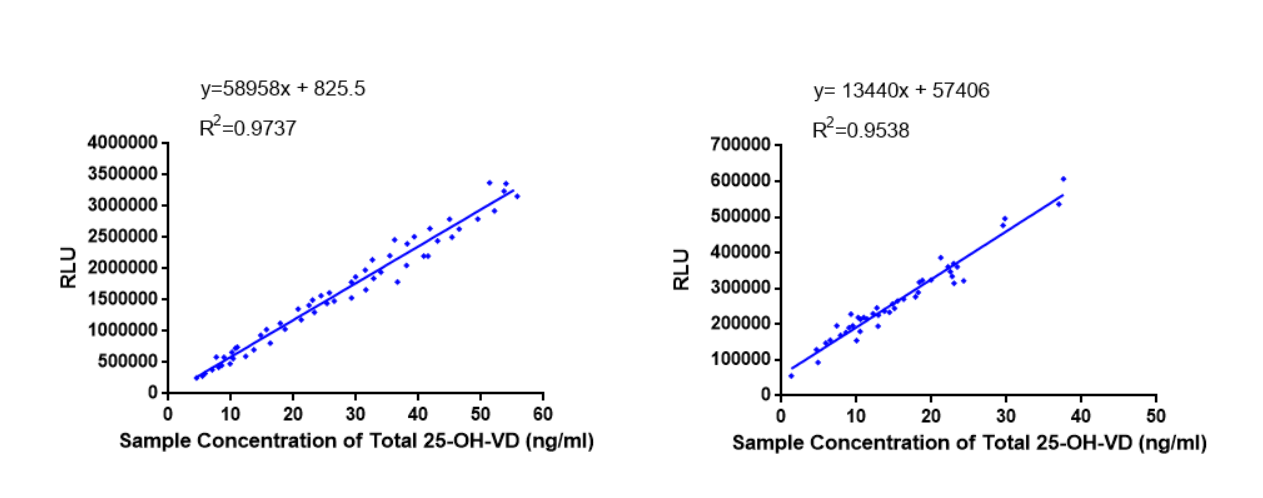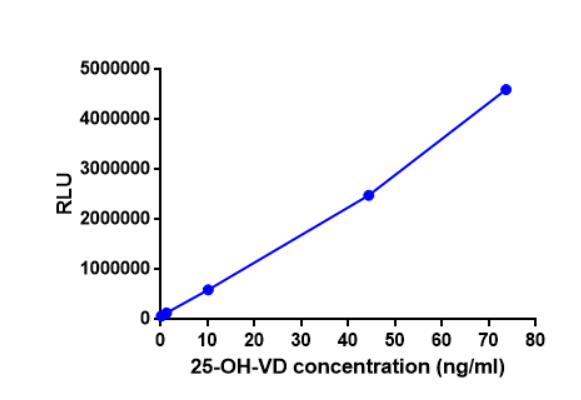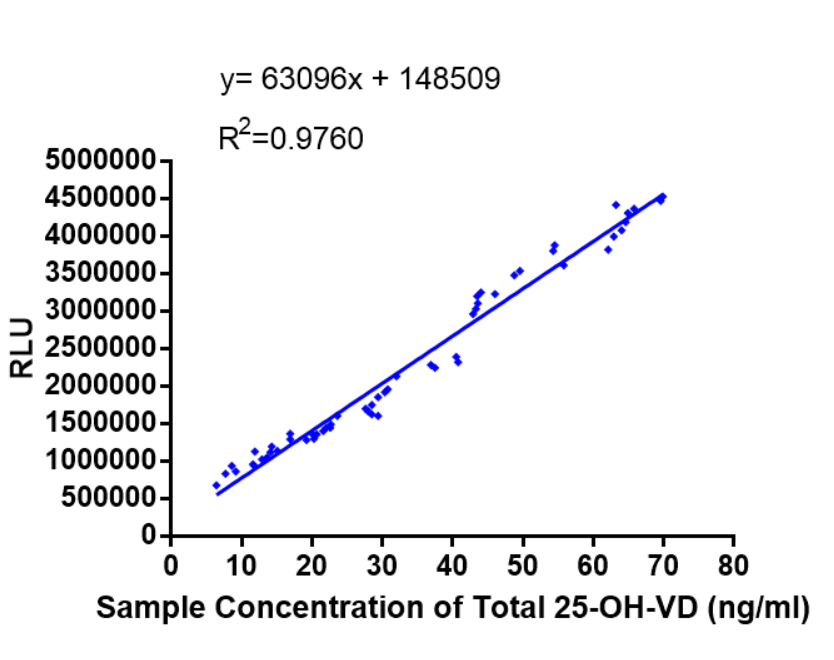Vitamin D3 Antibodies & Antigens for Bone metabolism & osteoporosis Test
The Vitamin D3 test is performed to measure serum levels of 25-OH-VD3 to infer the health status of bones. It shows gaps which are core business in recalling and conquering osteoporosis and to observe that bone mineral density is performed accurately.
For accurate fracture risk assessment and for response to osteoporosis and other bone diseases’ treatment the biomarkers, GDU provides diagnostic antibodies and antigens.
| Cat No. | Product Description | Product Type | Products Information |
| GMP-SMT-25-OH-(VD3+VD2)-Ab | Anti-25 hydroxyvitamin D (25-OH- (VD3+VD2)) antibody | antibody(Fc/mFc) | Details |
| GMP-SMT-25-OH-(VD3+VD2)-Hapten | 25 hydroxyvitamin D (25-OH- (VD3+VD2)) antigen | chemicals-BSA/OVA | Details |
| GMP-SMT-25-OH-VD-3-Ab | Anti-25-hydroxy (OH) Vitamin 3 (25-OH-VD-3) antibody | antibody(Fc/mFc) | Details |
| GMP-SMT-25-OH-VD-3-Ag | 25-hydroxy (OH) Vitamin 3 (25-OH-VD-3) antigen | chemicals-BSA/OVA | Details |
| GMP-SMT-25-OH-VD-Ab | Anti-25-hydroxy (OH) Vitamin (25-OH-VD) antibody | antibody(Fc/mFc) | Details |
| GMP-SMT-25-OH-VD-Ag | 25-hydroxy (OH) Vitamin (25-OH-VD) antigen | chemicals-BSA/OVA | Details |
| GMP-SMT-1-25-OH-VD3-Ab | Anti-1,25-hydroxy (OH) Vitamin 3 (1,25-OH-VD-3) antibody | antibody(Fc/mFc) | Details |
| GMP-SMT-1-25-OH-VD3-Ag | 1,25-hydroxy (OH) Vitamin 3 (1,25-OH-VD-3) antigen | chemicals-BSA/OVA | Details |
Validation data
Two important subtypes in ELISA techniques that are used for the detection as well as estimation of target antigens or antibodies are Sandwich ELISA and Competitive ELISA. Unfortunately, competition method has its drawback because of its sensitivity by the affinity of antibody and in the case of the trace detection there will be problem in differentiating the kit from the negative samples. The competitive method is less sensitive, specific, and has small detection range than the sandwich method which is an excess of reagents.
- Figure 1: Total 25-OH-VD identification ability
- Figure 2: Sample coincidence rate
- Figure 3: Standard curve
- Figure 4: Clinical comparative analysis

Figure 1. Total 25-OH-VD recognition ability; As can be seen from the figure above, 25-OH-VD2 and 25-OH-VD3 exhibit good cross-reactivity.
Genemedi's 25-OH-VD sandwich antibodies (GMP-SMT-25-OH-(VD3+VD2)-Ab01 and GMP-SMT-25-OH-(VD3+VD2)-Ab02) were validated on the direct chemiluminescence platform. The total amount of 25-OH-VD in the sample may be successfully detected thanks to the good cross-reactivity of 25-OH-VD2 and 25-OH-VD3.

Figure 2. Self-assessment clinical comparative analysis and Clinical comparative analysis of customer testing. The antibodies showed excellent agreement compared to mass spectrometry detection results, with an R2 as high as 0.9718 and a customer-validated R2 of 0.963. The sandwich approach greatly improves the accuracy of immunoassays.
The VD sandwich antibody(GMP-SMT-25-OH-(VD3+VD2)-Ab01 and GMP-SMT-25-OH-(VD3+VD2)-Ab02) made by Genemedi was validated using a direct chemiluminescence platform with the industry's gold standard LC-MS/MS as a control to increase the accuracy of the 25-OH-VD immunoassay. When compared to the mass spectrometry detection results, these antibodies exhibited excellent consistency, with an R2 of up to 0.9718 and a customer-verified R2 of 0.963. The sandwich approach greatly improved immunodetection accuracy.

Figure 3. Standard curve.
As can be
seen from the figure above, Genemedi's 25-OH-VD sandwich antibody has a
detection concentration range of 0.1 to 80ng/mL.
The detection concentration range for
Genemedi's 25-OH-VD sandwich antibodies (GMP-SMT-25-OH-(VD3+VD2)-Ab01 and
GMP-SMT-25-OH-(VD3+VD2)-Ab02) is 0.1 to 80ng/mL.

Figure 4. Clinical
comparative analysis(GMP-SMT-25-OH-(VD3+VD2)-Ab01 and GMP-SMT-25-OH-(VD3+VD2)-Ab02).
As can be seen from the figure above,
Detection employing 25-OH-VD sandwich antibodies validated by an enzymatic
chemiluminescence platform using an R2 of 0.9741, the data demonstrated strong
consistency using mass spectrometry (LC-MS/MS).
What is Vitamin D3 test for Bone metabolism & osteoporosis?
Cholecalciferol is a crucial nutrient to human body especially for bone heath since it improves calcium and phosphate absorption the two which are essential for formation of bones. This test of Vitamin D3 quantifies the concentration of 25-hydroxyvitamin D(25-OH-VD3) in the body and is recognized as the most accurate representation of a person’s vitamin D levels. This specific test is very important in identifying possible bone abnormalities such as osteoporosis, which is a condition that makes bones to become rarer and susceptible to breaking. By comparing the above levels, it can be seen whether a patient is a risk of developing osteoporosis or whether he/she needs supplements for the improvement of bone density. Such an approach is needed, especially in patients who are considered to be at a higher risk, either due to lack of sun exposure or poor nutrient intake.
Why use Vitamin D3 as a biomarker?
Vitamin D3 is a prominent biomarker for bone health. Here's how it compares with other biomarkers for different conditions and species:
| Species | Normal Range | Possible Diseases Listed | Specimens/Biofluids | Measurement Method |
| Cat | 30-100 nmol/L | Hypocalcemia, Osteoporosis | Serum | ELISA |
| Dog | 50-120 nmol/L | Renal Disease, Osteomalacia | Plasma | Chemiluminescence |
| Horse | 40-130 nmol/L | Metabolic Bone Disease | Blood | RIA |
| Cattle | 25-95 nmol/L | Rickets, Osteomalacia | Serum | HPLC |
| Human | 75-200 nmol/L | Osteoporosis, Cardiovascular | Blood | LC-MS/MS |
This table raises the issues of the technical normal reference ranges and diseases associated with these biomarkers in context of interspecies differences. It can for this reason be said that Vitamin D3 is not only important for bone health for humans but has value in different areas of health, which demonstrates its versatile role.
Why Use Vitamin D3 Pair Antibody and Antigen in Bone Metabolism & Osteoporosis Immuno-diagnostics?
The use of a particular antibody-antigen combination for Vitamin D3 in immuno-diagnostic methods increases the specifics and levels of determining 25-OH-VD3, which are important for precise bone health evaluation. This approach:
-
-
Reduces false positive results and therefore interference with other vitamin D metabolites that can give similar results.
-
Aids in providing factual information vital in assessing the level of a deficiency and prognosis of a specific treatment.
-
Facilitates patients with the diagnosis of bone-related diseases and aids in reduction of disease prevalence maintaining patient’s well-being.
-
How to use Vitamin D3 Pair Antibody and Antigen in Bone Metabolism & Osteoporosis Immuno-diagnostics in different diagnostic platform (LFA, CLIA, POCT)?
Lateral Flow Assay (LFA):Lateral Flow Assay (LFA):
-
Offers fast testing at the onset of patient care, which is most appropriate during initial assessment.
-
Easy to read display of measures which does not require a laboratory environment.
Chemiluminescence Immunoassay (CLIA):
-
High sensitivity and specificity because it is suitable for detailed analysis.
-
Control systems facilitate high throughput screening in the clinical laboratories.
Point-of-Care Testing (POCT):
-
To allow easy access and frequent examination of the outcomes.
-
Such outcomes are relevant for making consequent interventions based on the patient’s response to the treatment.






 Facebook
Facebook LinkedIn
LinkedIn Twitter
Twitter
